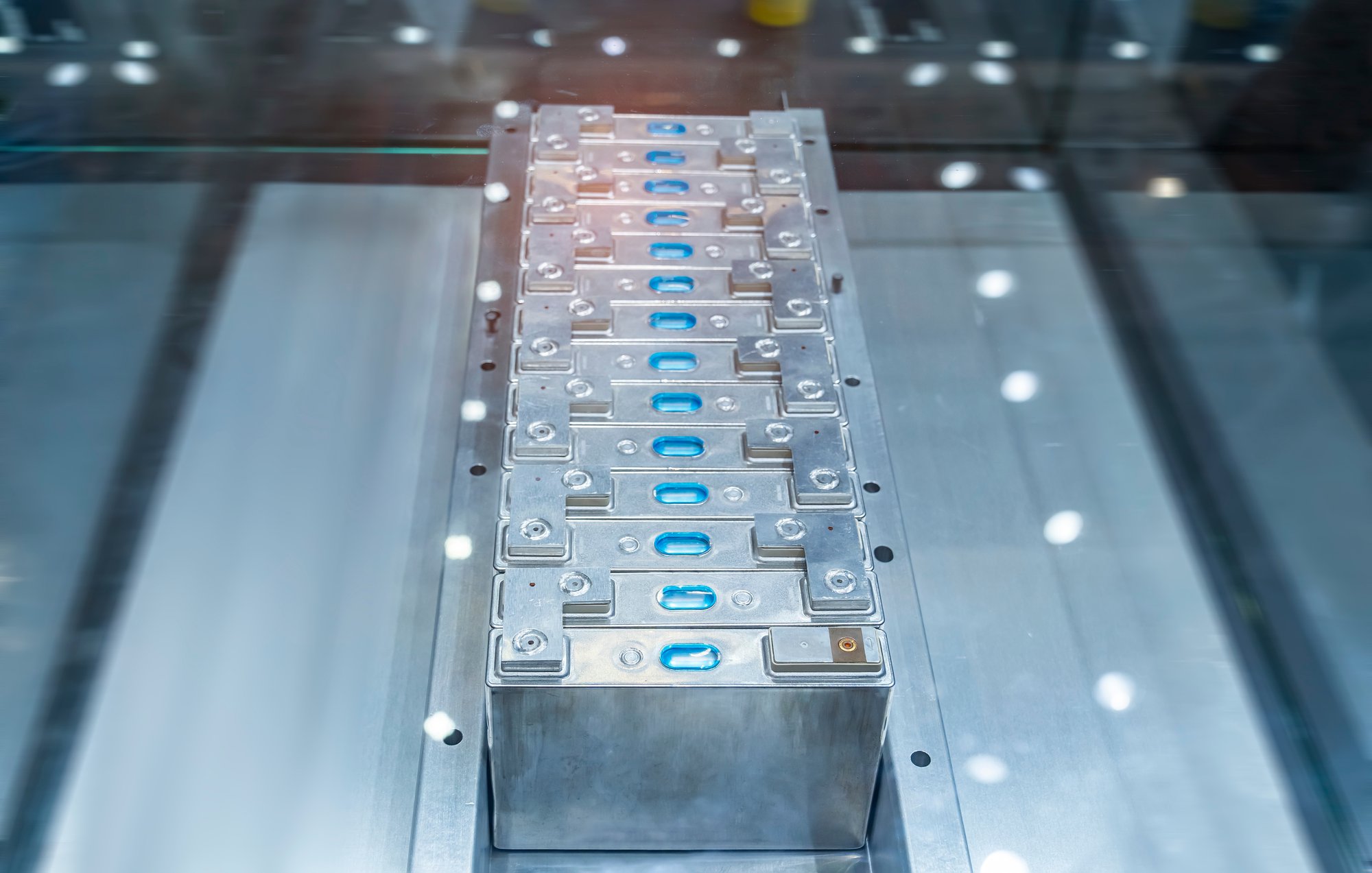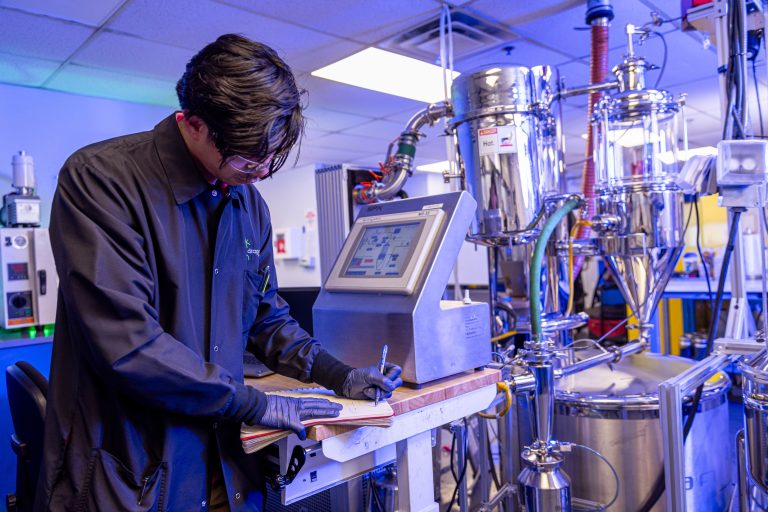The energy landscape is undergoing a profound transformation, driven by the rapid advancements in battery storage technology. These innovations are reshaping how we generate, distribute, and consume electricity, paving the way for a more sustainable and resilient power grid.
Battery storage systems have emerged as a critical enabler of the transition to renewable energy sources, such as solar and wind. By storing excess electricity and discharging it when needed, batteries help overcome the inherent variability of these clean energy resources.
Beyond grid-scale applications, battery technology is also revolutionizing the way individuals and businesses manage their energy needs. Both homeowners and commercial entities are increasingly adopting on-site battery storage to enhance their energy independence, reduce electricity costs, and improve resilience against power outages.
As the energy storage industry continues to evolve, it’s essential to understand the current state of battery technology, trends that will shape its future, and its pivotal role in modernizing the power grid. In this article, we explore these key developments and what they mean for the energy landscape.
The Current State of Battery Storage Technology
Battery storage technology has advanced rapidly in recent years. In fact, today’s batteries offer greater capacity, efficiency, and affordability.
Energy Storage Battery Types
Lithium-ion batteries dominate the market, powering everything from electric vehicles (EVs) to grid-scale storage systems. These batteries pack high energy density into a compact form. They also charge quickly and withstand numerous charge cycles. Lithium-ion technology continues to improve, with new chemistries boosting performance.

Vanadium flow batteries provide an alternative for large-scale grid storage. These systems store energy in liquid electrolytes, which allows for near-unlimited capacity. Flow batteries excel at long-duration energy storage, so they’re well-suited to stabilize renewable energy sources. However, they have lower efficiency than lithium-ion batteries and a high cost for maintenance and repair.
Sodium-ion batteries represent another emerging technology. These low-cost batteries use abundant, non-toxic materials. While less energy-dense than lithium-ion, sodium-ion offers promise for stationary storage applications.
Solid-state batteries, which use solid electrolytes instead of liquid, represent the future of battery tech. These batteries pack more energy, charge faster, and are inherently safer than conventional designs. Major automakers and battery producers are racing to commercialize solid-state solutions.
Beyond chemistry, innovative battery designs unlock new capabilities. For instance, modular, scalable systems allow customized energy storage for diverse applications. Hybrid systems integrate multiple battery types to optimize performance and cost.
Battery Storage Benefits
There are numerous benefits of advanced battery storage. Utilities leverage grid-scale systems to balance renewable energy, smooth power fluctuations, and defer costly infrastructure upgrades. Homeowners and businesses use behind-the-meter batteries to reduce electricity bills and increase resilience.
The development of electric vehicles has driven innovation in battery technology. As EV adoption surges, automakers demand higher-performing, lower-cost batteries. These advancements then filter down to stationary storage markets.
Looking ahead, the role of battery storage in the grid will only expand. Renewable energy sources such as solar and wind are inherently variable, so they require storage to ensure reliable, consistent power delivery. Batteries provide the flexibility to integrate more renewable generation onto the grid.
Distributed energy resources, from rooftop solar to electric vehicles, also call for greater storage capacity. Batteries enable these decentralized assets to store excess generation and dispatch power when needed.
As battery technology matures, costs will continue to decline. This will drive widespread adoption, making battery storage a ubiquitous grid resource.
Emerging Trends in Battery Storage Technology
There’s an urgent need to modernize power grids and support the transition to renewable energy. As such, the energy storage industry faces a rapid and continuous evolution. Several key trends shape the future of battery storage technology.
Increased Battery Lifespan
Improved battery lifespans are a noteworthy advancement in battery storage systems. New battery chemistries and management systems are extending both cycle life and calendar life. This reduces the total cost of ownership for energy storage projects. Lithium-ion batteries, for instance, now routinely achieve over 5,000 charge cycles.

Improved Energy Density
Increasing energy density is another transformative trend. Advances in materials and cell design can put more energy into smaller, lighter battery packs. This enhances the performance and versatility of energy storage systems.
New Battery Chemistry
As mentioned earlier, solid-state batteries represent a major breakthrough. These batteries replace the liquid electrolyte with a solid, ceramic-based material. This design ticks all the boxes—it increases energy density, improves safety, and extends battery life.
Such innovations enable new use cases for battery storage. For instance, grid-scale systems can now provide long-duration energy storage to complement intermittent renewable generation. Residential and commercial batteries are also becoming more practical for backup power, load shifting, and other applications.
Artificial Intelligence
Artificial intelligence (AI) and machine learning also play an increasingly important role in advancing battery storage capabilities in several key ways:
Optimizing Battery Performance
AI algorithms can analyze vast amounts of data on battery use, charging patterns, temperature, and other factors to identify optimal operating conditions. This enables battery management systems to fine-tune charging, discharging, and thermal regulation to maximize efficiency, lifespan, and safety.
Predictive Maintenance
AI models can detect subtle changes in a battery’s behavior that may indicate degradation or potential failures before they occur. The result is predictive maintenance, where batteries can be serviced or replaced proactively rather than waiting for outright failures.
Battery Cell Design
Artificial intelligence can model and simulate the complex chemical reactions and physical processes inside battery cells. This helps researchers explore new battery chemistries, materials, and cell designs to improve energy density, charging rates, and other key performance metrics.
Supply Chain Optimization
AI analyzes data across the battery supply chain, from raw material sourcing to manufacturing and distribution. Companies can then optimize inventory, logistics, and production planning to reduce costs and improve the reliability of battery supply.
Usage Pattern Analysis
By learning from data on the specific use of batteries in different applications, AI can provide recommendations to users. This may include optimal charging habits, battery management settings, and replacement timing to extend useful battery life.
The application of AI is helping to unlock the full potential of battery storage technology. This synergy between advancements in battery tech and AI is a key driver of the energy transition.
Integration With the Power Grid
Battery storage technology plays a crucial role in modernizing the power grid. Grid operators increasingly integrate batteries to stabilize electricity supply and demand. This integration makes the grid more reliable and resilient.
Stabilizing the Grid and Improving Renewable Energy Integration
We briefly mentioned how batteries store excess electricity generated during periods of low demand. They discharge this stored energy when demand increases, which smooths out fluctuations in the grid’s power levels.

In addition, batteries help compensate for the intermittency of renewable energy sources like solar and wind. Renewable sources are variable—their output rises and falls based on weather conditions. Battery storage offsets this variability and supports the growth of renewable energy. Batteries store surplus renewable energy and discharge it when production drops.
Consider the following two examples. Let’s say a utility-scale battery installation can store up to 300 megawatt-hours of electricity from any source at any time. This lets the grid build up its energy supply and draw on the stored power when renewable generation dips. The batteries prevent shortages, ensuring a steady flow of electricity.
Now, consider a battery storage system paired with a solar farm. Solar energy generated during the day is stored in the batteries. They then release this energy at night when solar production stops. This allows the grid to rely more heavily on renewable sources and optimize their use.
Improving Resilience in Disasters
Integrating batteries is key to enhance the grid’s resilience against disasters and disruptions. Battery storage provides backup power when main generation or transmission fails, such as through outages caused by extreme weather, cyberattacks, or other events.
This backup power can keep critical facilities such as hospitals and communication systems running until the grid is restored. In addition, it can improve recovery time for systems and communities following disasters.
Efficiency and Flexibility
Batteries also help the grid operate more efficiently. Specifically, their use can defer costly upgrades to generation and transmission infrastructure. Battery storage systems can provide the same grid services as traditional generators or transmission lines at a lower cost.
For instance, a California utility deployed batteries instead of building a new natural gas power plant. The batteries met peak electricity demand at a lower operating price than constructing the new plant and significantly reduced emissions.
Grid operators are deploying batteries at all scales, from large utility-scale installations to smaller behind-the-meter systems at homes and businesses. These diverse projects enhance the grid’s flexibility and resilience.
What’s more, homeowners with rooftop solar and battery storage can island themselves from the grid during outages. Businesses with on-site batteries can also maintain operations when the grid goes down. These distributed battery systems complement large-scale grid-connected batteries.
As battery technology continues advancing, their role in modernizing the grid will only expand.
Future Prospects and Innovations
Battery storage technology is poised for significant advancements in the coming years. Key areas of innovation include battery chemistries, smart technology and connectivity, and sustainability.

Battery Storage Chemistries
Researchers continue to seek and test new chemistries to bolster the safety, efficiency, and eco-friendliness of energy storage systems. Enhanced safety features will include fire-resistant battery materials and refined thermal management systems. Besides improving battery storage reliability, these features will also offer greater assurance and peace of mind for operators, homeowners, and businesses.
Researchers continue to explore new lithium-ion battery materials, such as silicon anodes and high-capacity nickel-rich cathodes. In addition, there’s growing interest in alternative battery chemistries like sodium-ion, magnesium-ion, and lithium-sulfur batteries.
These emerging technologies offer advantages such as abundant raw materials, lower costs, and improved safety features. This could potentially disrupt and diversify the battery storage industry.
Smart Technology
The growing adoption of the Internet of Things (IoT) in the energy sector will likely lead future battery storage systems to incorporate connectivity features. These features will enable seamless integration with smart devices, demand response programs, and grid networks. This integration then allows for real-time monitoring and control of storage systems to optimize efficiency.
In addition, virtual power plants (VPP) will offer opportunities to increase grid stability, improve efficiency, and generate revenue. A virtual power plant connects distributed energy resources and storage units, like rooftop solar panels or small-scale wind turbines to battery storage systems. These individual units are linked together through advanced software and communication technologies.
A VPP allows these distributed energy resources to be coordinated and controlled as if they were a single, large power plant. VPPs can help integrate more renewable energy sources onto the grid by using battery storage to smooth out the intermittency of solar and wind power.
What’s more, participants in a VPP can generate revenue by providing services like energy trading, frequency regulation, and other ancillary services to the grid.
Blockchain
Emerging technologies such as blockchain are further transforming the traditional supply chain model. A prime example is blockchain-enabled energy trading.
Through blockchain technology, decentralized energy trading platforms can be developed within smart grid networks. This will empower consumers to generate, store, and trade renewable energy with their neighbors and the grid. As a result, we’ll see a more democratized and resilient electricity ecosystem.
Reducing Environmental Impact
Advancements in battery storage technology are also improving recycling processes for spent batteries. This allows individual components to be extracted and reused, which reduces waste and lowers the overall production costs of batteries. Consequently, renewable energy storage systems will become more cost-effective.
In addition, research into alternative battery chemistries and materials aims to minimize the environmental impact of battery production and disposal. Through more abundant, eco-friendly, and sustainable resources, future battery storage systems can contribute to a greener and cleaner energy future.

Dragonfly Energy’s Role in Shaping the Future of Battery Storage
Dragonfly Energy is dedicated to a sustainable and responsible energy future. We offer innovative, eco-friendly power solutions that empower both individuals and industries to embrace a cleaner, more independent energy model.
At Dragonfly Energy, our battery development process is data-driven. We analyze the performance impact of every material and manufacturing step. To do this, we create digital twins of each battery cell using a laboratory inventory management system (LIMS). This approach streamlines development and helps identify potential issues early on, resulting in more efficient and reliable batteries and finished products.
Our chemistry-agnostic process works with different types of raw materials including LFP, NMC, LCO, etc. This enables us to customize our products to specific applications. We can then develop larger, more durable energy storage solutions, as well as smaller solutions designed for rapid charging. By tailoring our products to meet an application’s unique requirements, we can optimize each unit’s performance.
Dragonfly Energy’s smart lithium batteries, equipped with Dragonfly IntelLigence communication technology, enable us to create large-scale systems that offer real-time insights into system health. Dragonfly IntelLigence technology integrates with battery packs and lithium power system accessories to provide energy storage monitoring, notifications, performance, and safety tools. In addition, we’re currently developing non-flammable lithium battery options to further enhance system safety.
What’s more, the Wireless Mesh Network offers reliable connectivity, so you can monitor power systems from anywhere in the world with a mobile app. Our patented technology quickly detects and warns you of any issues. It also provides real-time notifications and alerts to ensure top-level battery protection and optimization. This advanced technology is compatible with common system protocols, such as RV-C and NMEA 2000.
Through innovation, advanced technology, and intelligent system management, we aim to reimagine energy efficiency and accelerate the transition to renewable energy.
Unlocking the Full Potential of Energy Storage
The future of battery storage technology holds immense promise for transforming the energy landscape. Continued advancements in battery chemistries, smart grid integration, and sustainable manufacturing processes will be crucial in unlocking the full potential of energy storage.
As grid-scale and distributed battery systems become more widespread, they’ll help integrate renewable energy sources, improve grid resilience, and empower consumers to take control of their energy needs. Innovations in flow batteries, solid-state designs, and alternative chemistries could further diversify the battery market and provide tailored solutions for diverse applications.
Through continued investment, research, and collaboration, Dragonfly Energy aims to be a driving force in the transition to a sustainable, resilient, and equitable energy future. We’re a leading lithium battery technology company that specializes in cell manufacturing, battery pack assembly, and full system integration. With hundreds of thousands of reliable battery packs deployed through top-tier original equipment manufacturers (OEMs) and a diverse retail customer base, we’ve established ourselves as a front-runner in the lithium battery industry.
In addition, our patented dry electrode manufacturing process enables us to produce power solutions that are compatible with a wide range of chemistries. These solutions can be applied across diverse applications, such as energy storage systems, EVs, and consumer electronics. Our overarching mission is to deploy our proprietary, non-flammable, all-solid-state battery cells in the near future.
By harnessing the power of these advancements, we can unlock new possibilities for clean energy generation, distribution, and consumption. Are you ready to pave the way to greener, more independent, and more reliable power? Let’s connect.


